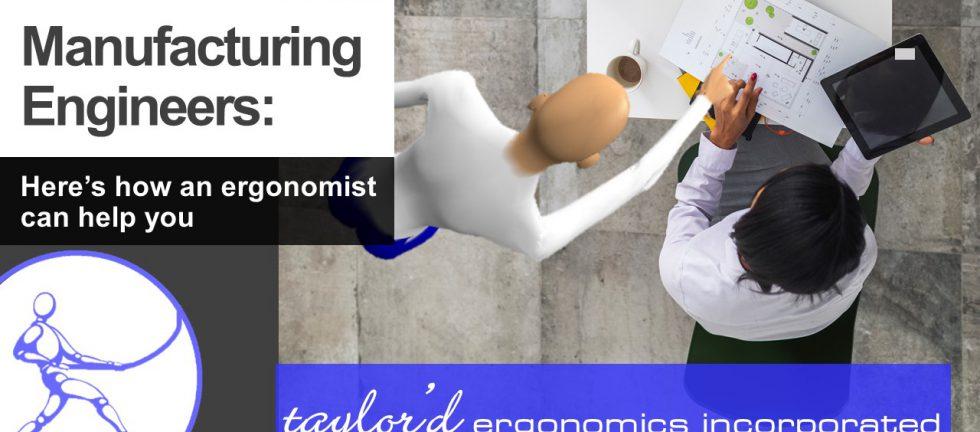Ergonomists interact most with manufacturing engineers, so I will use the title “engineer” to refer to those who work in manufacturing. (Hopefully, my husband will forgive me for excluding civil, chemical, electrical, and other engineers who deal less frequently with the human-machine interface.) Manufacturing engineers work with computer networks, robots, machines, tools, and materials-handling equipment. You may be wondering, how can an ergonomist help with these complex processes and systems?
The engineer’s priority is, rightly, getting machines to make high-quality products efficiently. In our experience, new equipment is often built based on previous designs. When a factory decides to build a new line to make units faster, the thinking is often something like this:
“We made widgets using this process before, so we can build them better and faster if we adjust these features in the next design.”
Sometimes, a challenge will be identified that relates to human performance, and then the design team will be interested in what needs to be done to fix a specific issue. As an example, a paint defect might be common in a certain area on some parts, and the inspectors often miss it. This might cause customer complaints, returns, and rework. When designing the new line, the thinking may be:
“In the current process, we keep missing this defect during the inspection, so, in the next line, we’ll tilt the part up and provide more light, so the inspectors can see the defect more easily.”
Or, better yet:
“Let’s improve the design at the painting station, so the operator can reach to paint the part without bending the wrist.” (…or let’s solve whatever problem is creating the defect to occur. If it’s a human performance problem, an ergonomist can help.)
At some point during the design process, engineers consider whether it will be possible for a human to perform the work. Sometimes, this involves considering whether the engineer would personally be able to do the work – “I can reach this, and I could lift that, and I think I’d be comfortable at that height.” It’s human nature to think that whatever helps me will help you. Who hasn’t gone out and bought four of the same widgets as Christmas gifts, because our personal experience of that item was amazing? (I have. Turns out not everyone loves warm socks that are triple the thickness of the ones that actually fit in their shoes.)
Unfortunately, the “it fits me” approach doesn’t always work well in this process, or any process, if you stop to think about it! If you’re designing work for a population that is smaller or weaker than you are, then basing the design on your own size and strength will lead to problems. Similarly, if a large person needs to fit into a space, basing the design on your own small stature will be problematic. An ergonomist can help to ensure that your designs are inclusive, fitting everyone from the smallest to the largest worker.
Imagine a workplace where the equipment was designed to optimize human performance….not simply to allow people to reach, fit, and exert the efforts safely, but to be comfortable while doing so for 40 hours per week?
Ergonomists can help to evaluate the human-machine interfaces in a design, and provide recommendations that will help workers to do their best work, efficiently. We’ll work with you to find ways to bring parts closer, improve access, avoid bending, reaching, and excessive manipulation. We’ll provide biomechanical data to help you compare options and select the most effective design. These design changes will ultimately result in fewer complaints, fewer errors and scrap, and higher efficiencies. Everyone in the workplace will be thanking you, as the engineer, for considering ergonomics in your design… Supervisors will appreciate the smooth launch and lack of start-up complaints, HR will be pleased that the jobs accommodate more workers, Safety will be thrilled that the injury risk has been minimized, upper management will appreciate the high productivity, quality, and low injury rates, and, most importantly, workers will go home happier and less tired at the end of the week!
Does the process work? A client recently wrote this to me, completely unsolicited:
“Your support has been great and the team really appreciates it – I can’t tell you how many times your name comes up (in a very positive way) during our internal project meetings. 😊”
Aside from brightening my day, his comment affirmed that our approach is working. We use biomechanical assessment tools to predict the effect of a proposed job, apply ergonomics design guidelines to suggest improvements, and then test out the most promising solutions to ensure that they will minimize risk. And we do all of this with frequent consultation with the design team. If you’re embarking on a new manufacturing design project, contact us for support now, to avoid employee complaints later.


